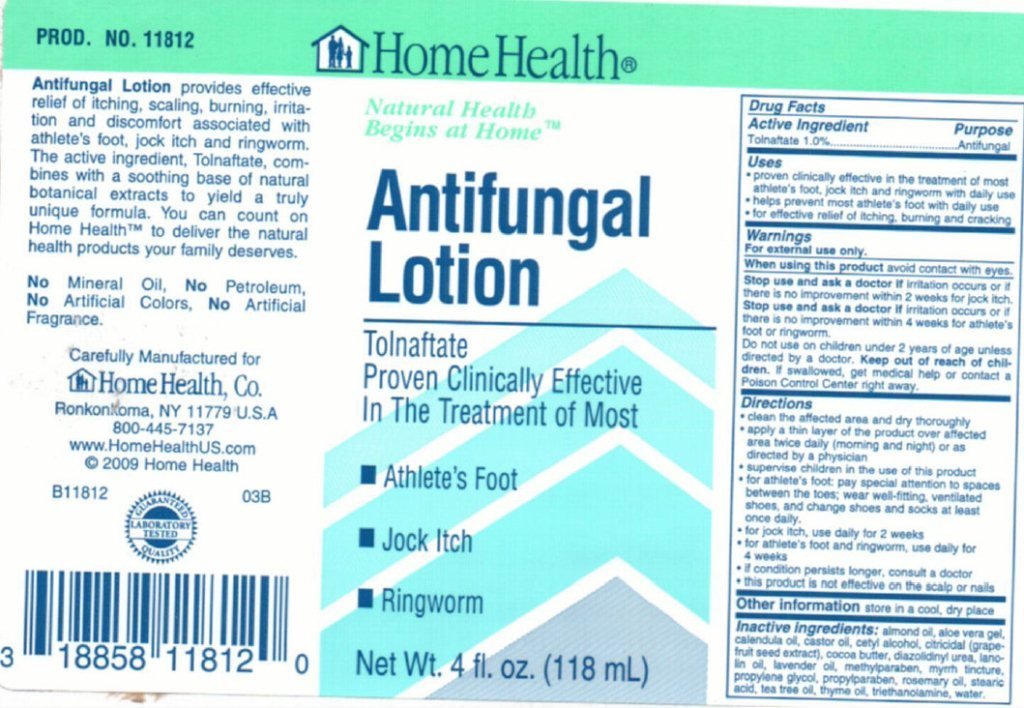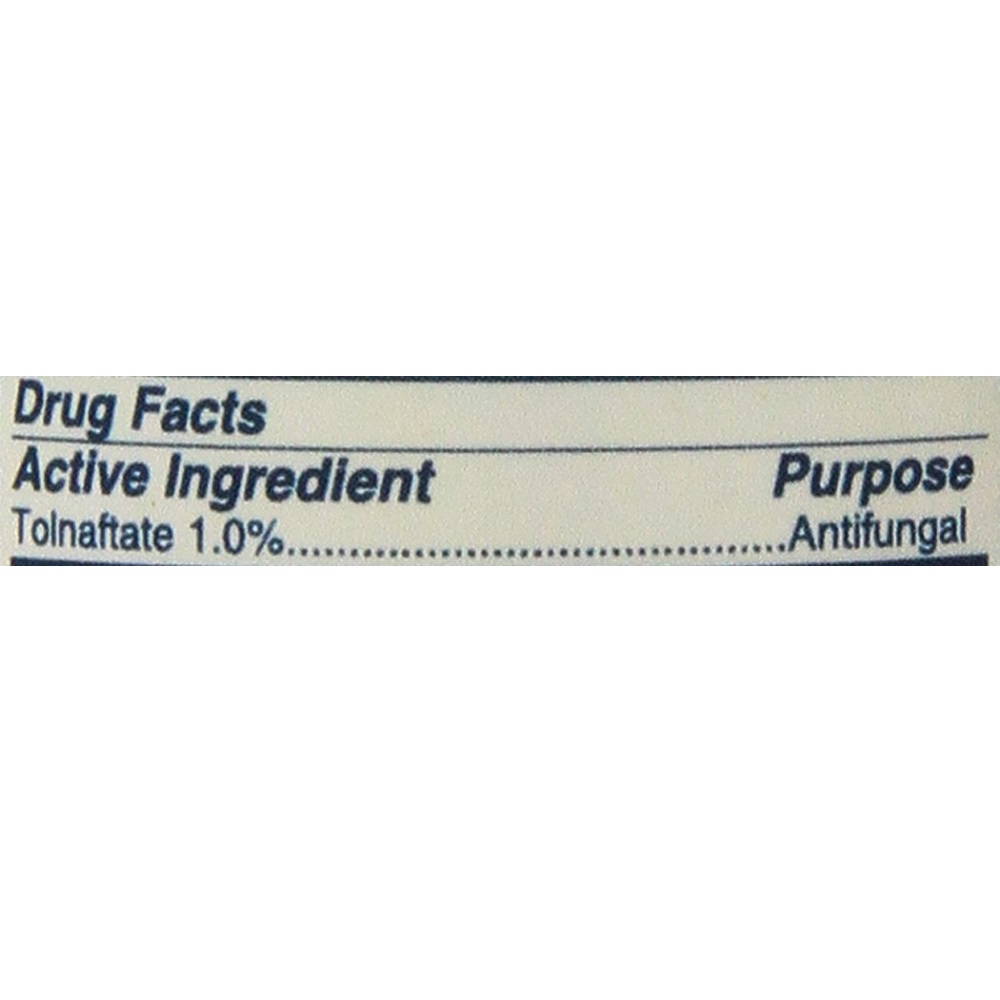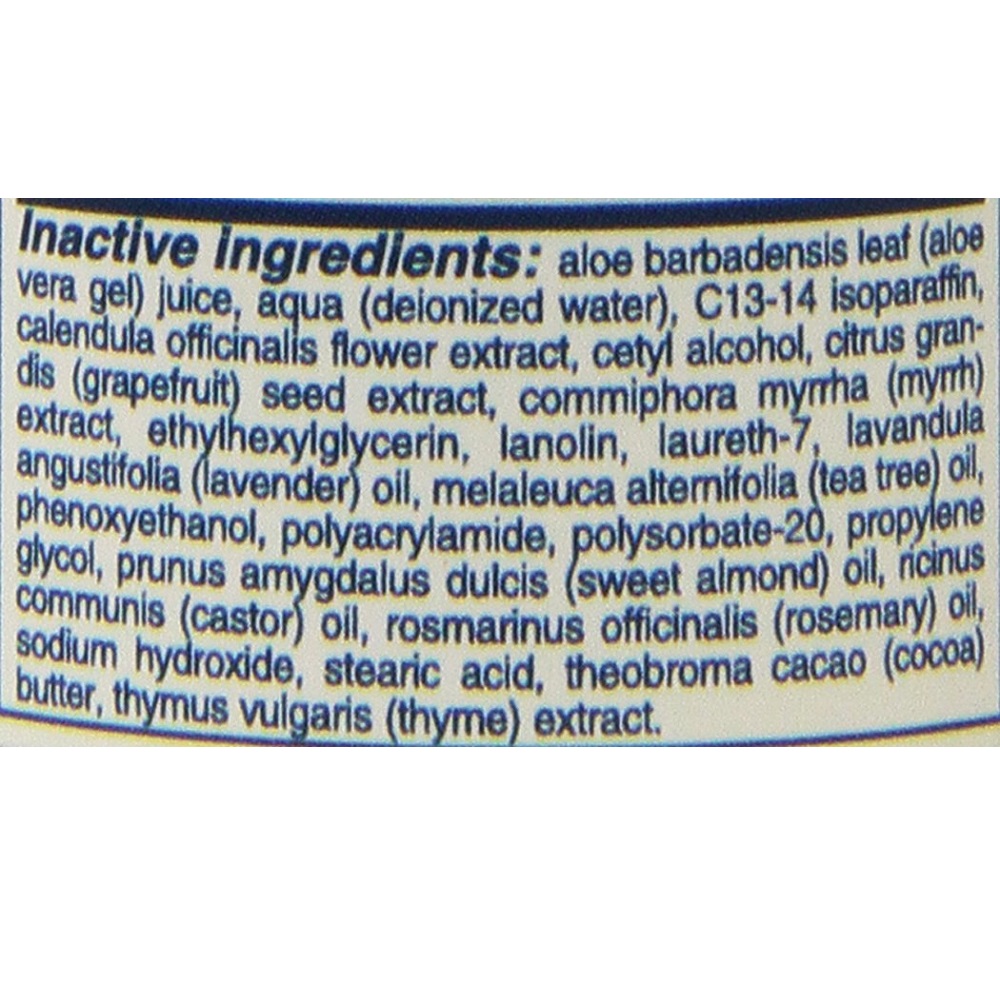| Tolnaftate | This ingredient is currently being researched thoroughly by our team. A NutraWiki page summarizing our findings will be available soon. |
|---|
| Almond Oil | Helps Moisturize and Reduce the Appearance of Wrinkles |
|---|
| Aloe Vera Gel | Aloe seems to be able to speed wound healing by improving blood circulation through the area and preventing cell death around a wound. |
|---|
| Calendula Oil | One of the best reasons to keep calendula handy is due to its healing abilities. If you apply calendula flower oil to your cuts, scrapes, bruises, and insect bites, you can quickly speed the healing process, partially due to the anti-inflammatory properties of the oil, in addition to the unique antioxidant compounds found in this miraculous plant. |
|---|
| Castor Oil | Ricinus Communis (Castor) Seed Oil is a vegetable oil obtained from the seeds of the Ricinus communis plant. |
|---|
| Cetyl Alcohol | Cetyl alcohol is used in the cosmetic industry as an opacifier in shampoos, or as an emollient, emulsifier or thickening agent in the manufacture of skin creams and lotions. It is also employed as a lubricant for nuts and bolts, and is the active ingredient in some “liquid pool covers” (forming a surface layer to reduce evaporation and retain heat). |
|---|
| Citricidal | This ingredient is currently being researched thoroughly by our team. A NutraWiki page summarizing our findings will be available soon. |
|---|
| Cocoa Butter | Moisturizes and Rejuvinates Skin Cells |
|---|
| Diazolidinyl Urea | Preservative |
|---|
| Lanolin Oil | Lanolin oil is used as a stabilizer, as an emulsifier in ointments, and in medications such as zinc oxide. |
|---|
| Lavender Oil | Helps prevent hair loss. Lavender is used for restlessness, insomnia, nervousness, and depression. |
|---|
| Methylparaben | Used as a food preservative and has the E number E218. |
|---|
| Myrrh Tincture | Antioxidant benefits – a study published in the prestigious journal Food and Chemical Toxicology found that myrrh (Commiphora molmol) emulsion was able to protect against lead (PbAc)-induced hepatotoxicity. |
|---|
| Propylene Glycol | Propylene glycol is on the U.S. Food and Drug Administration (FDA) generally regarded as safe list (not to be confused with ethylene glycol, which is extremely toxic if ingested). |
|---|
| Propylparaben | It is used as a preservative for its anti-fungal and anti-microbial properties to extend the shelf life of beauty and cosmetic products. It is considered non-toxic, non-sensitizing and non-irritating at .05 to 1% concentrations. As a food additive, it has the E number E216 |
|---|
| Rosemary Oil | Rosemary is used topically (applied to the skin) for preventing and treating baldness; and treating circulation problems, toothache, eczema, and joint or muscle pain such as myalgia, sciatica, and intercostal neuralgia. |
|---|
| Stearic Acid | Stearic acid is one of many fatty acids that occur naturally in various plants and animal derivatives. It’s found in such products as animal tallow, cocoa butter and vegetable fats. When it’s used in cosmetic products, stearic acid primarily fulfills the role of a thickener or hardener. Stearic acid is the substance that helps your bar of soap retain its shape — just as it does in products such as candles, oil pastels and hard candies. |
|---|
| Tea Tree Oil | Tea tree oil is derived from the leaves of the tea tree. The tea tree was named by eighteenth century sailors, who made tea that smelled like nutmeg from the leaves of the tree growing on the swampy southeast Australian coast. Do not confuse the tea tree with the unrelated common tea plant that is used to make black and green teas. |
|---|
| Thyme Oil | Thyme contains chemicals that might help bacterial and fungal infections, and minor irritations. It also might relieve smooth muscle spasms, such as coughing. |
|---|
| Triethanolamine | Triethanolamine, often abbreviated as TEA, is a viscous organic compound that is both a tertiary amine and a triol. A triol is a molecule with three alcohol groups. Triethanolamine is a strong base. |
|---|






Reviews
There are no reviews yet.